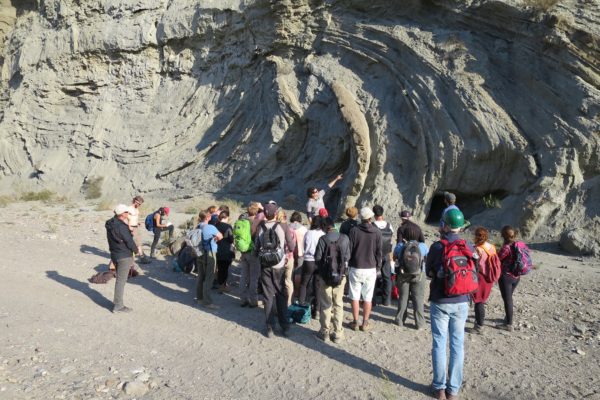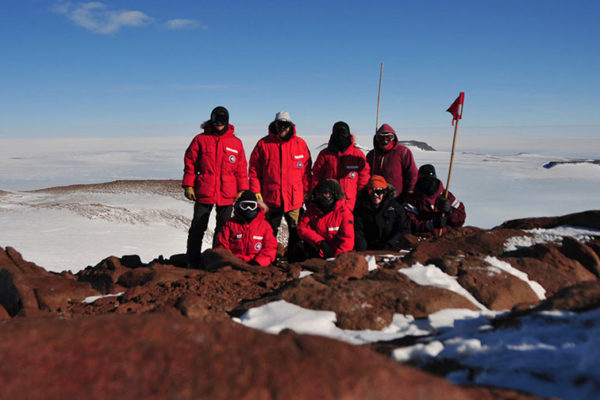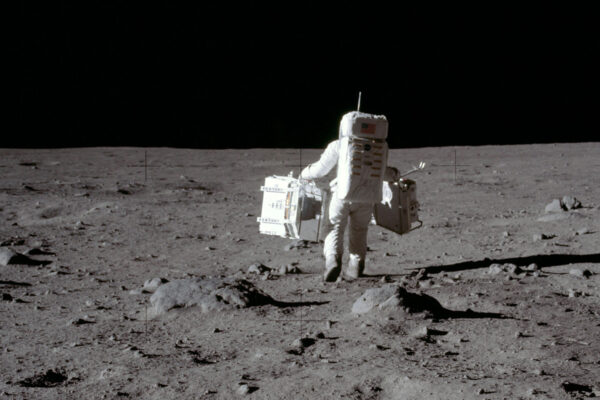There’s a small room in Rudolph Hall that most students walk right past without noticing. But when anyone finds it, they usually insist all their friends come and look as well.
Inside the room are shelves of dull, brown rocks that begin to glow in vivid greens, oranges, blues and purples when a button is pushed and ultraviolet lights turn on.
Many of the rocks on display were collected by Jill Pasteris, PhD, professor of earth and planetary sciences in Arts & Sciences, although she says it is really her colleague Bob Osburn we should thank for the display, because he made sure it was put into the blueprints for the building, hand-selected the samples, and helped design the lighting system.
Pasteris grew up in Pennsylvania, two hours from Franklin, New Jersey, “the fluorescent mineral capital of the world.” More fluorescent minerals have been found in two nearby zinc mines — the Franklin Mine and the Sterling Hill Mine — than anywhere else in the world. This mining area is the source of about 350 minerals, of which at least 80 are fluorescent.
At 15, still too young to drive, she asked her father to drive her to Franklin and joined the local mineral society, which gave her access to “The Dumps” at the Franklin Mine, where scrap rock and low-grade ore not worth the shipping costs were discarded. “If you paid a price you could go in and pick up samples,” she said.
But the mines kept popping up in her life. Her professors at Bryn Mawr College and Yale knew Bob Metzger, the chief geologist at the Sterling Hill mine, who took her on guided tours, one of which led to the funny situation she recounts in the video.
“How cool is that?” Pasteris said. “A guided tour with the chief geologist.”
For a geologist fluorescence is a fascinating riddle. Only about 15 percent of minerals fluoresce and not every specimen of a mineral that can fluoresce does so. Typically fluorescence occurs when a mineral contains impurities known as “activators,” such as a light salting of molybdenum.
Different activators can make the same mineral fluoresce in different colors.
“A mineral might pick up different activators depending on where it forms, so a specimen from Mexico might fluoresce a different color than one from Arizona, even though it’s the same mineral,” Pasteris said.
“On the other hand, some minerals are just good fluorescers,” she said. “Calcite, for example, can glow in just about all the fluorescent colors. And certain elements are generalized activators that can cause a wide variety of minerals to fluorescence,” Pasteris said. Manganese is one.
In addition to activators, there are quenchers, impurities that prevent the mineral from fluorescing. An admixture of iron, for example, can quench fluorescence.
“But, oddly enough, having too much of an activator can prevent fluorescence as well,” Pasteris said. “So an overdose of a generalized activator like manganese can keep a good fluorescer like calcite from lighting up.”
What’s marvelous about all this is there’s absolutely no practical reason why rocks should glow. In this way the fluorescing rocks resemble the twinkling stars; their beauty brings people up short and, for a moment, spectacularly interrupts their routine preoccupations.


